Chambonas in Ardèche |
Chambonas in Ardèche |
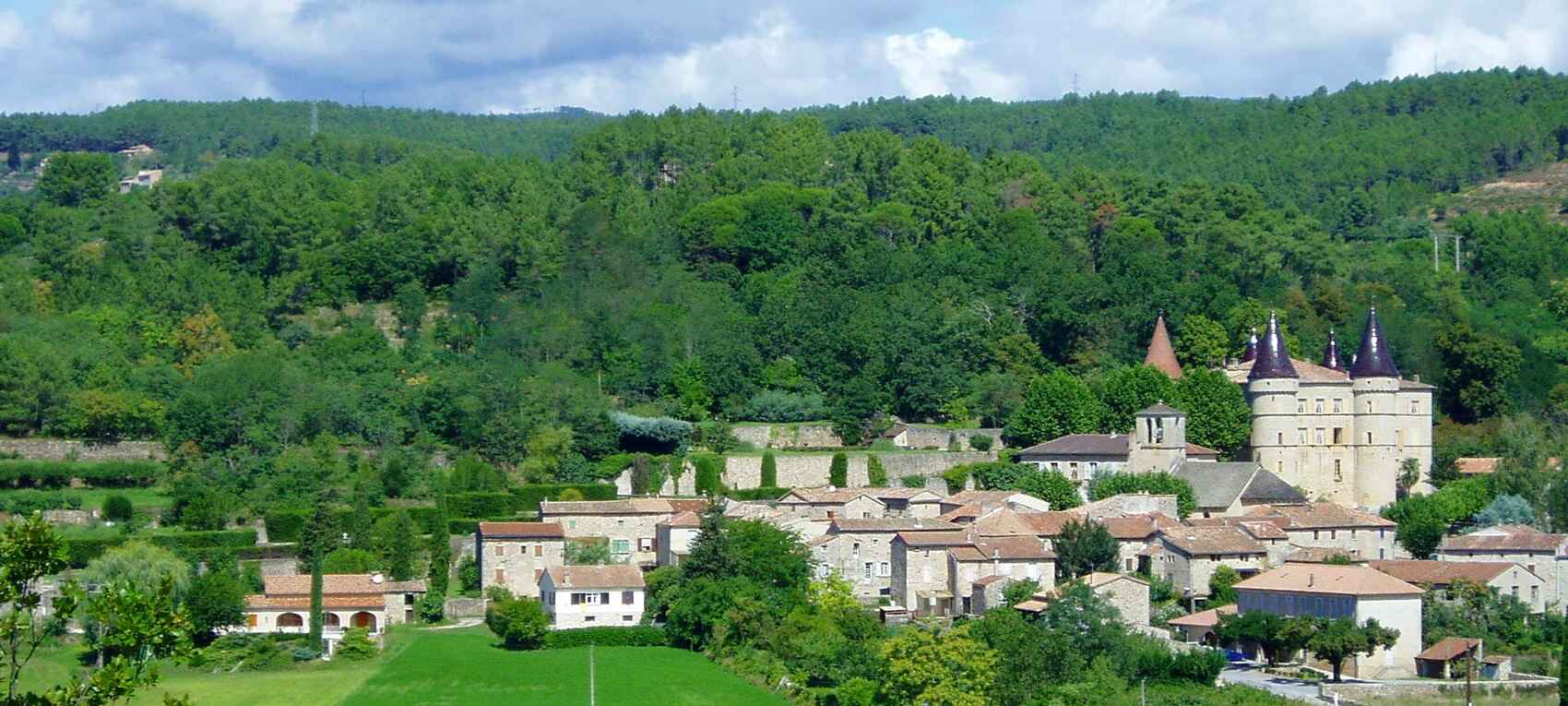
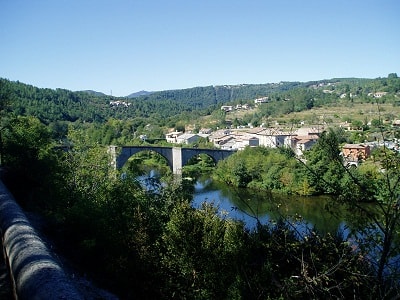 Chambonas is a French commune located in the Ardèche department in the Auvergne-Rhône-Alpes region. It has approximately 250 inhabitants and is situated near the town of Les Vans. Chambonas is known for its historical heritage, notably its 14th-century medieval castle, which is classified as a historical monument. The commune is also located near the Chassezac River, which offers opportunities for swimming, fishing, and canoeing. Chambonas is an ideal destination for those seeking tranquility and the beauty of the natural landscapes of Ardèche.
Chambonas is a French commune located in the Ardèche department in the Auvergne-Rhône-Alpes region. It has approximately 250 inhabitants and is situated near the town of Les Vans. Chambonas is known for its historical heritage, notably its 14th-century medieval castle, which is classified as a historical monument. The commune is also located near the Chassezac River, which offers opportunities for swimming, fishing, and canoeing. Chambonas is an ideal destination for those seeking tranquility and the beauty of the natural landscapes of Ardèche.
The village of Chambonas was once part of the Uzège area that was attached to the Ardèche department by the Revolution, along with the town of Les Vans. Here, we enter a region where key relationships have long been established with the Mediterranean and Velay, and where the relationship with the Rhône has become secondary. It is the attraction of Albenassian, especially during the silk era, that explains the attachment to Ardèche, and thus to the Rhône-Alpes region. However, one feels in Languedoc like nowhere else in the department.
A road, a family, a castle. Chambonas could be called Chambonas-the-Castle, as the imposing mass of it dominates the village. One arrives at the village via a bridge, the first version of which was built by the Benedictine monks of Saint-Gilles in the 11th or 12th century. It is important to carefully distinguish this monastery from the grand priory that the Order of Saint John of Jerusalem, later the Order of Malta, owned in the same town. Pope Innocent III entrusted the Benedictines of Saint-Gilles in 1208 with the churches of Assions, Malbosc, Saint-André-de-Cruzières, Les Vans, Saint-André, and Saint-Loup de Villefort, among others. As for the church of Chambonas, it was first ceded to the canons of Saint-Ruf of Avignon, then to the monks of Saint-Gilles, also in 1208.
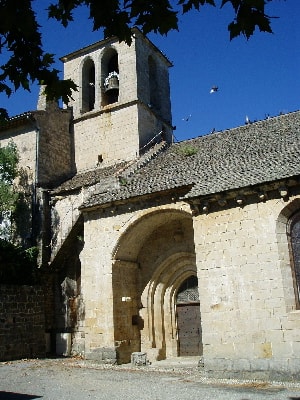 The Benedictines sought to reach Puy-en-Velay as quickly as possible, crossing the Chassezac. Upstream, the medieval bridge of Pondère, between Salelles and Gravières, was only a plank leading to a floodplain. The herds in transhumance crossed the river at the ford of Maisonneuve, where a bridge was built from 1759 to 1766. The Chambonas bridge, constructed under the direction of the Saint-Gilles monastery, had no toll, and a ford could replace it if it had been destroyed by a flood. The main goal was to avoid the detour via Maisonneuve.
The Benedictines sought to reach Puy-en-Velay as quickly as possible, crossing the Chassezac. Upstream, the medieval bridge of Pondère, between Salelles and Gravières, was only a plank leading to a floodplain. The herds in transhumance crossed the river at the ford of Maisonneuve, where a bridge was built from 1759 to 1766. The Chambonas bridge, constructed under the direction of the Saint-Gilles monastery, had no toll, and a ford could replace it if it had been destroyed by a flood. The main goal was to avoid the detour via Maisonneuve.
It is clear that the presence of the castle is linked to this important passage. However, the country had no powerful lordly house: Uzège and Gévaudan were under the suzerainty of the distant Counts of Toulouse; to the north were Châteauneuf-de-Randon, then Polignac. But in Chambonas itself, the lords were those of Naves, who had thundered since 1273 (long before the definitive attachment of the church of Viviers to the kingdom, or even the foundation of Villeneuve-de-Berg) a parage with King Philip the Bold of France. The lord of Les Vans was none other than the prior, while the abbey of Saint-Gilles had placed itself under the protection of the Capetians since the 12th century.
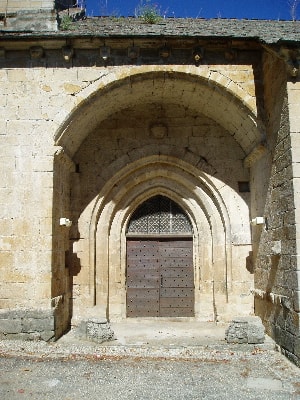 It appears that the castle was founded by the lords of La Garde-Guérin, likely concerned with better protecting the acts at their toll. The earliest known is Raymond, lord of La Garde-Guérin since 1237. He married Sibille de Beauvoir du Roure, from the family that would later own Banne, Barlac, Largentières, and many other places. We know Jaules and Jourdain de la Garde, who paid homage in 1240 to Louis IX for what they had in Chambonas and Vompdes. We also know of a Jourdain de la Garde in 1330, and a Jaucelin who, on April 6, 1366, is said to be lord of Chambonas. Since the main lords of Baves reside in Gévaudan, they must have entrusted La Garde with the oversight of the bridge. In the 15th century, the La Garde family formed marital alliances with neighboring minor lords, the Montjeu of Chassagnes, the Fraissinet of Fontanes in Gévaudan, and the Castrevieille of Jaujac. In the 16th century, Mazon speaks of a Guy de la Garde of Chambonas, squire and lieutenant of the seneschal of Provence, who published in 1550 a History and Description of the Phoenix dedicated to Marguerite of France, sister of Francis I.
It appears that the castle was founded by the lords of La Garde-Guérin, likely concerned with better protecting the acts at their toll. The earliest known is Raymond, lord of La Garde-Guérin since 1237. He married Sibille de Beauvoir du Roure, from the family that would later own Banne, Barlac, Largentières, and many other places. We know Jaules and Jourdain de la Garde, who paid homage in 1240 to Louis IX for what they had in Chambonas and Vompdes. We also know of a Jourdain de la Garde in 1330, and a Jaucelin who, on April 6, 1366, is said to be lord of Chambonas. Since the main lords of Baves reside in Gévaudan, they must have entrusted La Garde with the oversight of the bridge. In the 15th century, the La Garde family formed marital alliances with neighboring minor lords, the Montjeu of Chassagnes, the Fraissinet of Fontanes in Gévaudan, and the Castrevieille of Jaujac. In the 16th century, Mazon speaks of a Guy de la Garde of Chambonas, squire and lieutenant of the seneschal of Provence, who published in 1550 a History and Description of the Phoenix dedicated to Marguerite of France, sister of Francis I.
The rise to power of the family has been well highlighted by Jacques Schnetzler, who links it to the presence of the mule track from Les Vans to Laveyrune, and from there to Puy. Saint-Gilles had connections with the Levant since the Crusades; moreover, mule teams carried wine and oil from the lowlands, descending wood and fodder. The transport could have reached the Vans early on. The fortune of La Garde relied on the ownership of the mills of the Chassezac and its tributaries (10% of revenues in 1710), on several inns in Les Vans, Chambonas, Salelles, and Peyre, a meeting place for the paths from Lablachère and Les Vans, as well as on the exploitation of numerous estates or farms along the route, from Chambonas (particularly the land of Fontgamier, from where the waters that supply the fountains of the castle come) to Salelles, Thines, Montselgues, Saint-Laurent-les-Bains, Laveyrune, and even Sampzon. The La Garde family had also acquired rights of measurement for grain and wine, which several communities had sold to them. They purchased numerous woods that allowed hunting, and especially the sale of timber.
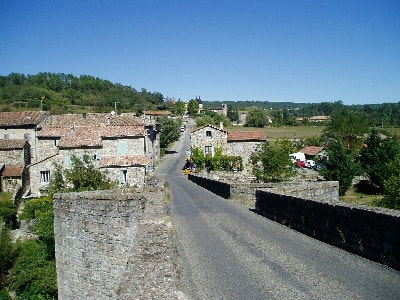 The importance of this route at the end of the Middle Ages and before is explained by the lack of the Rhône route, contested between the kingdom and the Holy Empire until the 14th century and closed by the Burgundian States until the end of the 15th century. King Charles VII created two fairs in Les Vans, one lasting eight days from August 21, and another lasting two days on November 8. The latter soon disappeared in favor of the Saint-Thomas fair on December 21. Nevertheless, the Régordane route (GR®700), or the path from Saint-Gilles to Puy-en-Velay, gradually ceded its role to the Rhône axis. The path from Chambonas to Peyre now heads towards Petit-Paris, and from there towards Saint-Laurent-les-Bains; this path, exclusively for mules, became the wine route from the lowlands and that for grains from the Mountain and Velay.
The importance of this route at the end of the Middle Ages and before is explained by the lack of the Rhône route, contested between the kingdom and the Holy Empire until the 14th century and closed by the Burgundian States until the end of the 15th century. King Charles VII created two fairs in Les Vans, one lasting eight days from August 21, and another lasting two days on November 8. The latter soon disappeared in favor of the Saint-Thomas fair on December 21. Nevertheless, the Régordane route (GR®700), or the path from Saint-Gilles to Puy-en-Velay, gradually ceded its role to the Rhône axis. The path from Chambonas to Peyre now heads towards Petit-Paris, and from there towards Saint-Laurent-les-Bains; this path, exclusively for mules, became the wine route from the lowlands and that for grains from the Mountain and Velay.
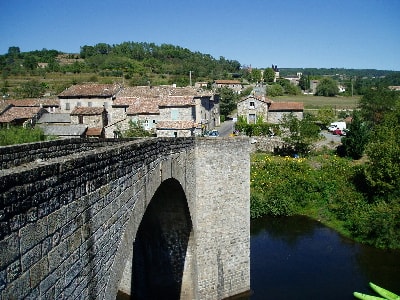 It is along this path that, in the 16th and 17th centuries, the La Garde family developed their fortune. Jacques Schnetzler puts forth a bold hypothesis: since Les Vans was a Huguenot town, and the lords of Lower Vivarais and the Rhône valley were mostly on the Catholic side, the route from Chambonas may have been the essential link between the Reformers of Privas des Boutières and those from the South. The religious motivation may have replaced the economic one, which is intriguing on an ancient route partly defined by abbeys. The La Garde family initially sided with the Reformers: Antoine de la Garde was a valiant Huguenot captain who captured Arlempdes in 1585, imprisoned his captain Louis de Goys, defended the place against the assaults of Saint-Vidal, the leader of the League of Puy, but perished assassinated by the villagers. The date and circumstances of the family's abjuration are unknown.
It is along this path that, in the 16th and 17th centuries, the La Garde family developed their fortune. Jacques Schnetzler puts forth a bold hypothesis: since Les Vans was a Huguenot town, and the lords of Lower Vivarais and the Rhône valley were mostly on the Catholic side, the route from Chambonas may have been the essential link between the Reformers of Privas des Boutières and those from the South. The religious motivation may have replaced the economic one, which is intriguing on an ancient route partly defined by abbeys. The La Garde family initially sided with the Reformers: Antoine de la Garde was a valiant Huguenot captain who captured Arlempdes in 1585, imprisoned his captain Louis de Goys, defended the place against the assaults of Saint-Vidal, the leader of the League of Puy, but perished assassinated by the villagers. The date and circumstances of the family's abjuration are unknown.
Ardèche, land of castles. By Michel Riou. Published by La Fontaine de Siloe.
The Chambonas bridge is the largest medieval bridge in the Ardèche department. The Chambonas castle from the 16th and 17th centuries dazzles with its five terraced gardens in the French style from the mid-18th century. The Romanesque church (early 13th century) is of extraordinary iconographic richness. The Château de Chambonas is not open to visitors. From its medieval origin, this castle retains five imposing towers with glazed roofs. Established on a rocky outcrop not far from the Chassezac, it underwent successive modernization campaigns in the 15th and 16th centuries. Under Louis XIV, the addition of a portal and the creation of a French garden opening onto the banks of the Chassezac transformed the severe medieval residence into a pleasure house.
Former holiday hotel with a garden along the Allier, L'Etoile Guest House is located in La Bastide-Puylaurent between Lozere, Ardeche, and the Cevennes in the mountains of Southern France. At the crossroads of GR®7, GR®70 Stevenson Path, GR®72, GR®700 Regordane Way, GR®470 Allier River springs and gorges, GRP® Cevenol, Ardechoise Mountains, Margeride. Numerous loop trails for hiking and one-day biking excursions. Ideal for a relaxing and hiking getaway.
Copyright©etoile.fr